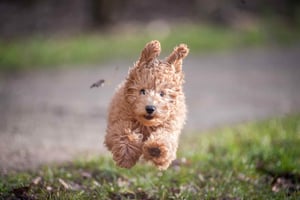Toilet training a puppy is a time-consuming process that requires patience, consistency and lots of...
Best Way to Teach Puppy Not to Bite
Training a puppy not to bite is an important part of responsible pet ownership. It can be a challenging task, but with patience and consistency, it is possible to teach a puppy not to bite. This article provides some tips and tricks for teaching a puppy not to bite, including the use of positive reinforcement, setting boundaries, and providing plenty of exercise and playtime.
Understand Why Puppies Bite
One of the first steps in teaching a puppy not to bite is understanding why they bite in the first place. Puppy biting is a natural behavior and is usually done out of curiosity, teething, or playfulness. It is important to be patient with puppies and remember that they are still learning how to interact with the world around them.
It is also important to understand that puppies can bite out of fear or anxiety. If a puppy is feeling scared or overwhelmed, they may bite as a way of defending themselves. It is important to recognize these signs and provide a calm, secure environment for the puppy to help them feel safe.
Use Positive Reinforcement
Positive reinforcement is one of the best ways to teach a puppy not to bite. This method involves rewarding the puppy for good behavior and ignoring or redirecting any unwanted behavior. For example, when the puppy is not biting, give them a treat or a toy and praise them for their good behavior.
It is important to be consistent with this method and to reward the puppy immediately after they display the desired behavior. Rewarding the puppy will help them learn what behavior is expected of them and will encourage them to continue to display this behavior.
Set Boundaries
It is important to set boundaries and make sure that the puppy understands them. For example, if the puppy is biting, make a loud noise or say "no" firmly. This will help the puppy understand that the behavior is not acceptable and will help them learn to stop the behavior.
It is also important to be consistent with these boundaries. If the puppy is not following the boundaries, it is important to take the necessary steps to ensure that they do not continue the behavior. This may include removing the puppy from the situation or providing a distraction to help redirect their attention.
Provide Exercise and Playtime
Providing the puppy with plenty of exercise and playtime is also important for teaching them not to bite. When puppies are bored or lack stimulation, they may resort to biting as a way to pass the time. Providing the puppy with plenty of physical and mental stimulation will help keep them occupied and will help prevent unwanted behaviors such as biting.
This can include taking the puppy for walks, playing fetch, or providing them with interactive toys. It is also important to provide the puppy with plenty of playtime with other animals and people, as this will help them learn how to interact with others in a positive way.
Be Patient and Consistent
Training a puppy not to bite can be a challenging task, but it is important to be patient and consistent. It may take some time for the puppy to learn the desired behavior, but with patience and consistency, it is possible to teach them not to bite.
It is also important to remember that puppies are still learning and may make mistakes. It is important to be patient and provide positive reinforcement when the puppy displays the desired behavior. This will help the puppy understand what behavior is expected of them and will help them learn not to bite.
Conclusion
Training a puppy not to bite can be a challenging task, but with patience and consistency, it is possible to teach a puppy not to bite. Understanding why puppies bite, using positive reinforcement, setting boundaries, and providing plenty of exercise and playtime are all important steps in teaching a puppy not to bite. It is also important to be patient and consistent with the training process, as this will help the puppy learn the desired behavior.



